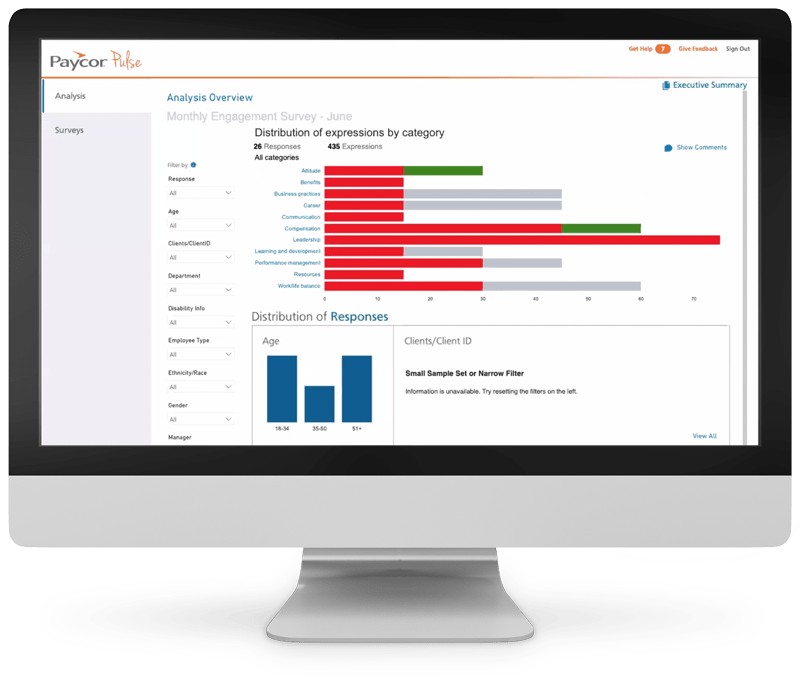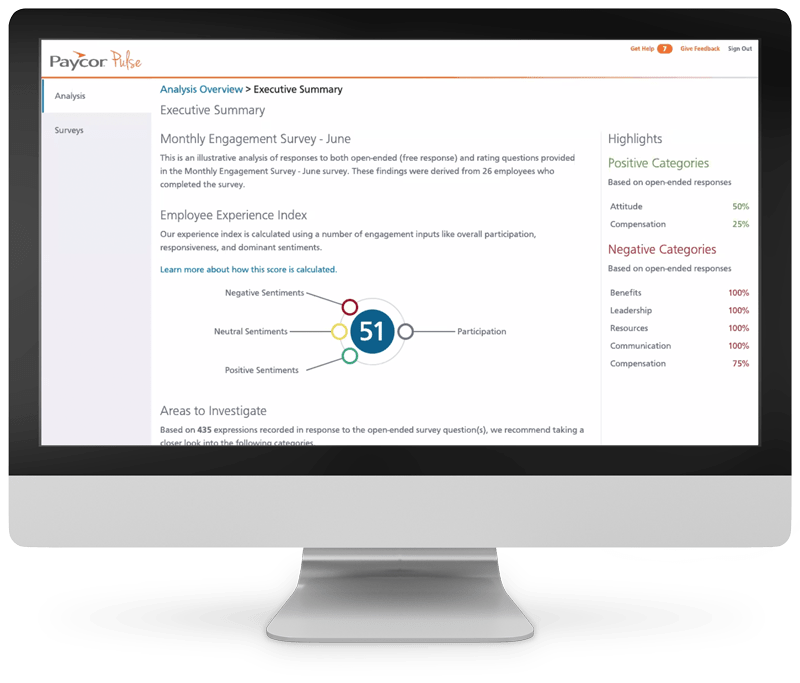Employee engagement is essential for so much of what businesses need to succeed—retention, productivity and, ultimately, the bottom line. How best to track it, though, isn’t always clear. What we do know is that current methods just aren’t working: only 16% of HR leaders are happy with how they currently measure employee engagement.
This isn’t a surprise, when 74% of companies still carry out an annual employee engagement survey. Collecting all this data in one go means that by the time responses have been collected, analyzed and it’s time to take action, the findings are already out of date.
In a volatile economy and with increased remote working the new normal, employee engagement is dropping faster than ever. To mount an effective response, businesses first need to understand how employees are feeling, and fast.
Giving Employees a Voice
Of course, employee engagement surveys aren’t a silver bullet. A next level listening strategy will supplement these with focus groups, town halls, skip level meetings—and more. It’s not just about listening to employees, either; they need to know they are being heard. Decisions taken in response to employee feedback should be clearly (and repeatedly) communicated.
Surveys have a part to play, but businesses must first solve the dilemma that the more data they gather, the longer it takes to analyze. And the more irregular the survey cadence, with more questions asked of employees, the lower response rates will be.
The solution is more regular surveys which can be quickly analyzed but which still give space for open-ended employee feedback. Cookie-cutter box ticking doesn’t work—you need to ask questions that allow for unexpected answers. That’s why Paycor has introduced our new Pulse surveys, offering leaders deep and instant insights into employee engagement at any given moment.
Pulse Surveys
The concept of a pulse survey is that it’s conducted more regularly than traditional methods, but without losing any of the depth of insight. What makes this possible is Natural Language Processing. It is now possible to analyze an entire batch of written responses instantly to understand what is and isn’t working in your organization. Discover pain points, whether widespread or specific to a certain department or demographic, as well as identifying areas of strength.
Pulse surveys are deliberately simple, in order to achieve high employee responses on a regular basis. This gives companies valuable insights not only into current levels but also the direction of employee engagement. Let’s see how this works in practice.
- Sending Out the Engagement Survey
For a successful employee engagement survey, it’s crucial to get employee buy-in. This means explaining why you’re sending the surveys and emphasizing the importance that everyone responds. It also means choosing a cadence that’s regular but not so often that response rates drop.
-
Instant Sentiment Analysis
After sending out a traditional annual employee engagement survey, you’d normally have to wait weeks, if not months, to start interpreting the results. With Pulse Surveys, that process can happen instantly. Sentiment analysis takes written comments and classifies them as positive, negative or neutral.
Favorability analysis shows the distribution of responses for non-written questions where employees are simply asked to rate their agreement on a scale.
-
Diving Deeper into Results
This is just the start. Leaders now have the ability to break down these results by demographic, like age or department (with protections in place so employee identities are hidden). Do you have a company-wide problem, or are results being dragged down by a specific employee group?
Most usefully, you can narrow down into the specifics of the sentiment analysis. For example, if there are positive sentiments about a specific theme like leadership, you can dive deeper and see if these sentiments mostly correspond to senior leaders or employee supervisors.
While the broad analysis saves time, you can always choose to view the actual responses that make up these categories, so you can hear employee voices directly.

- Key Takeaways
There are endless opportunities for self-guided analysis, digging into the details and discovering trends. However, our Pulse Surveys’ Executive Summary feature automatically generates an analysis for the user. These insights include key strengths, weaknesses and potential areas to investigate. By noting areas of large variance—for example, one department heavily negative towards Learning & Development—you can quickly identify potential employee engagement pain points in the organization.
The entire survey can also be boiled down into one simple Employee Experience Index, combining participation responsiveness and dominant sentiments. While employers should always dive deeper, tracking this number from survey to survey gives a quick indication of your organizational progress.

Paycor Can Help
Paycor creates HR software for leaders who want to make a difference—Pulse Surveys can help. Understanding how employees are feeling helps you be more responsive, make better business decisions and, importantly, retain your top talent.









